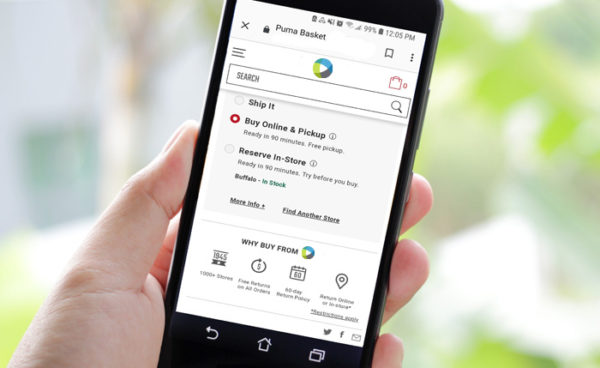BOPIS & Ship-To-Store – NOT the Same!

BOPIS and Ship-To-Store are easy to confuse. Kind of… Ship-to-store is what it says. It is about taking an order (often an online order) and shipping items to the store to fulfill. Then the customer can have it shipped to their home. Alternatively, they can have it held at the store for them to pick it up, later.
Buy online pickup in-store (BOPIS) is as it describes. The customer buys items online and decides to pick up their purchase at a store convenient to them.
Ok – in their simplest form, they seem to be the same. But BOPIS & Ship-to-Store differ when you dive into the details.
Dumb Ship-to-Store
Being an omnichannel aficionado, I like to consider the more advanced forms of BOPIS. However, lets first explore a simple form of ship-to-store.
Ship-to-store processes can be set up in quite a straightforward manner. A retailer sets up a single business rule that includes store locations as shipping options. Then, when the retailer receives an online order, it is always sent to the distribution center (DC). The DC focuses on fulfillment. It can fulfill directly to the customers’ address. Or, otherwise, it will ship items from the DC to individual stores.
Store SMI
SMI is short for slow-moving inventory. This is a challenge for every organization with goods. Now imagine that you are a store manager. The end of the rainy season is approaching. You still have 125 pairs of bright pink rubber rainboots, as in-store stock. Clearly, the store is having a challenge with SMI for these particular boots.
Then an online order arrives for a pair of size 9 bright pink rubber rainboots. This customer wants to pick up the item from your store because it is near their home. Now the simple system takes the order, routes it for ship-to-store fulfillment from the DC.
Despite having 125 pairs of bright pink rubber rainboots (including size 9), yet another pair is sent to the store. You can only imagine the store manager’s face contort with rage at this point. Why would the system send another pair of exactly the inventory overstocking their store? Aaargh!
BOPIS & Ship-to-Store: Difference
In contrast, consider an intelligent order management system (OMS). It is set up to support BOPIS. It is set up to support your stores. A smart alternative to the scenario is for order management to consider inventory levels of all locations.
Rather than blindly shipping even more pink boots to the store near the customer, the system checks inventory at the store. The order routing algorithm determines that the smartest thing to do is to have the store use its inventory to fulfill the pickup. No point in moving even more inventory to a store with a clear SMI problem.
A smart BOPIS example is where the OMS purposefully uses the field inventory which is closest to the customer. It reduces the SMI burden at the store. As a matter of fact, it also reduces any additional shipping costs. By reducing field SMI, it also alleviates the pressure to markdown items at the end of the season.
Leveraging More Field Inventory
BOPIS & Ship-to-Store are very similar concepts. In effect, in one way, they are the same process. However, using capable OMS technology for BOPIS ensures your operation is run intelligently. It is key in reducing slow moving field inventory. In like manner, the technology gets items ready for a customer pickup, faster. It may even help reduce the aggravation of some of your field store managers. These two concepts are different enough that you need to consider the systems that will help you make the most of your existing assets.


